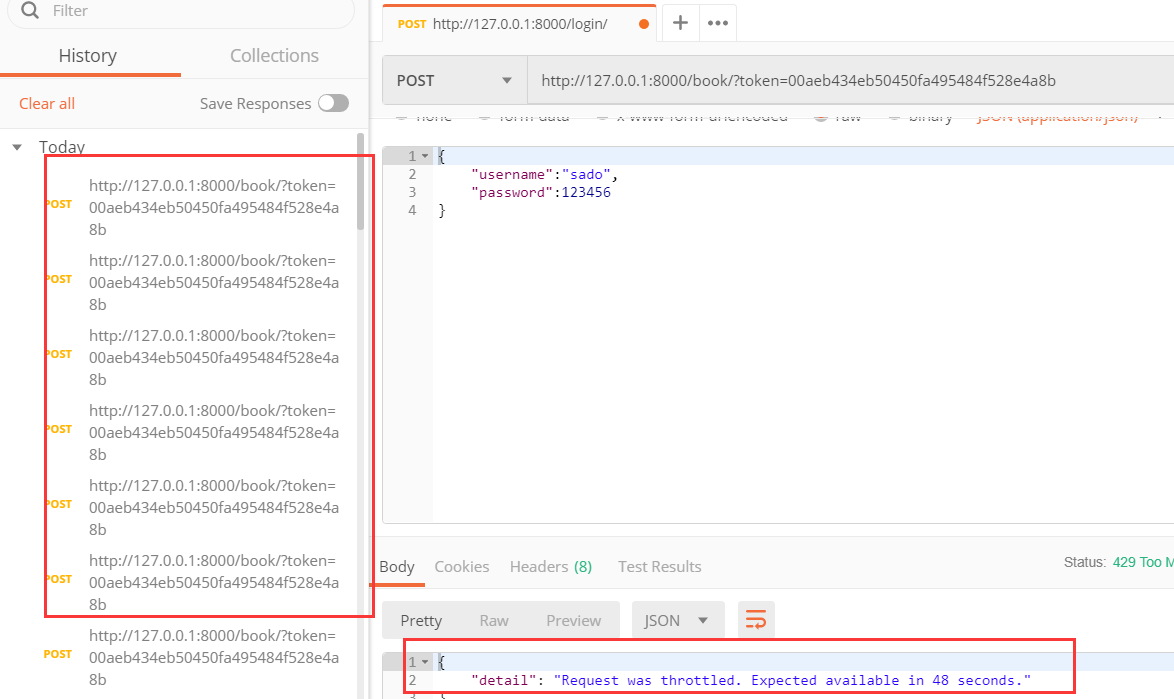一、频率组件的使用
频率组件的存在对我们这web开发有着很大的影像,它的作用就是限制用户在一段时间内访问的次数。
下面让我们介绍一下频率组件怎样使用
1.首先需要导入
from rest_framework.throttling import SimpleRateThrottle
2.编写我们的频率类

class MyThrottle(SimpleRateThrottle): scope = "visit_rate" # 这个值决定了在配置时使用那个变量描述限制的频率 def get_cache_key(self, request, view): # 这个方法也是必须要有 return self.get_ident(request)
3.最后还需要再setting中配置一下
REST_FRAMEWORK = { # 'DEFAULT_THROTTLE_CLASSES': ( # 'app01.utils.throttle_class.MyThrottle', # ), 'DEFAULT_THROTTLE_CLASSES': ( 'app01.app_thorttle.MyThrottle', ), "DEFAULT_THROTTLE_RATES": { "visit_rate": "5/m", # 这个参数就是频率类中定义的那个参数scope, 其中第一个数字5表示5次,后面的m表示一分钟,还有s,一秒, h, 一小时, d, 一天 } } duration = {'s': 1, 'm': 60, 'h': 3600, 'd': 86400}
二、作用局部的频率类

三、如何自己实现频率组件
1.编写频率类
import time from rest_framework.throttling import BaseThrottle class MyThrottle(BaseThrottle): visited_record = {} def __init__(self): self.history = None def allow_request(self, request, my_cbv): # 这个my_cbv是源码中传的我们的视图类,这里我们也要传进去 # print(self.get_ident(request)) # 可以获取本次请求的ip ip = request.META.get("REMOTE_ADDR") if ip not in self.visited_record: self.visited_record[ip] = [] current_time = time.time() history = self.visited_record[ip] self.history = history print(history) while history and current_time - history[-1] > 60: # 把大于60秒的时间都删掉 history.pop() if len(history) > 2: # 第三次访问,列表中只有2个值,也满足条件 return False history.insert(0, current_time) return True def wait(self): """ 用于返回还剩多少时间访问; 本次访问时间:9:50:55 [09:50:30, 09:50:20, 09:50:10] 剩余 60 - (9:50:55 - 09:50:10)秒才能访问 :return: """ c_time = time.time() return 60 - (c_time - self.history[-1])
2.在视图类中加入
throttle_classes = [MyThrottle]
效果如图:
